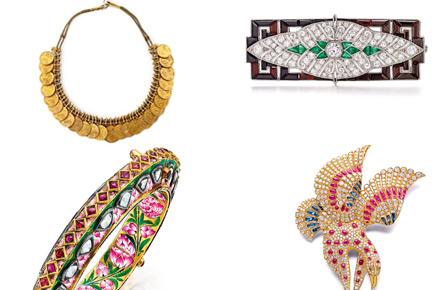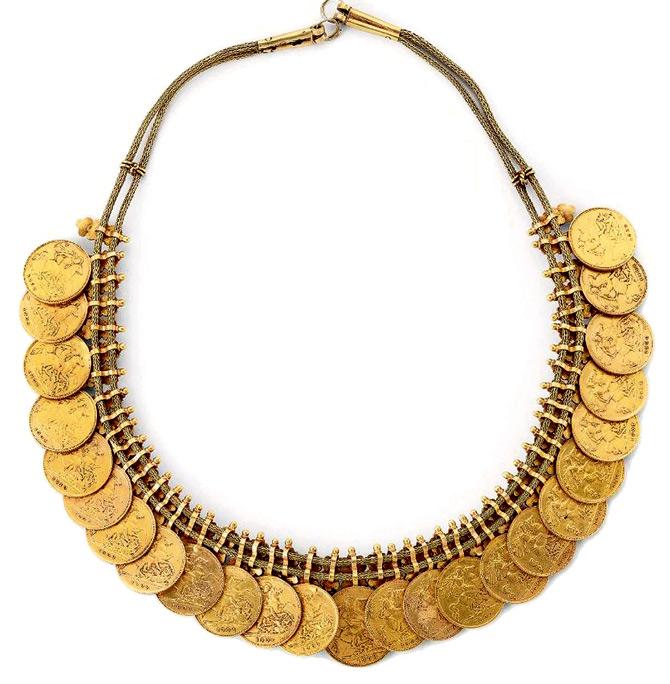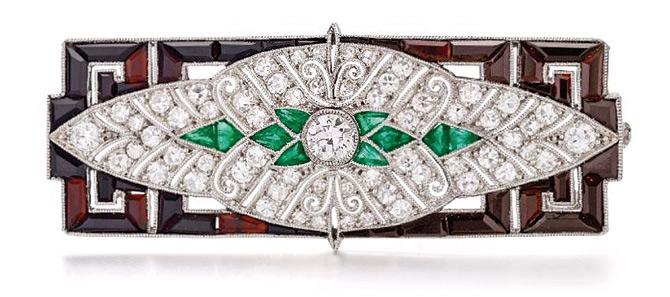...is part of India’s 5,000-year culture of jewellery, seen at SaffronArt’s auction of fine jewels

25jewellery
Speaking of imposters, in 1851, the East India Company gifted a 361-carat gemstone, etched with the names of six Mughal emperors, to Queen Victoria. Named the Khiraj-i-alam (Tribute to the World) or the Timur Ruby, the stone was set in a necklace, now part of the Crown Jewels. It was only later that it was discovered that this was no ruby; it was a spinel, the royal ruby’s lesser cousin. Similarly, the Black Prince Ruby, placed just above the Koh-i-noor in the British crown – also a spinel. Making a case for this “under-appreciated” gemstone, SaffronArt’s online auction of fine jewels has a seven-row pink spinel necklace, estimated
at over Rs 5 lakhs.
ADVERTISEMENT
With anecdotes such as these, miniature paintings and photographs from the turn of the century, the auction, which will be held later this week, traces the social and historical connections with both traditional and modern jewels. In the doe-eyed princess of a Pahari painting, you can draw the link to a more modern emerald and pearl necklace to her ornaments. Minal Vazirani, co-founder of SaffronArt who has researched the lots, says, “India is one of the more sophisticated markets. We go to X or Y designer, but fail to notice that India has an astonishing array of jewels.”
While the pieces in the auction emphasise the aesthetics of India’s 5,000 years of jewellery art, the country comes with its challenges. There are jewellers aplenty who specialise in jewels meant for every occasion. “Many of us here have a family jeweller who will advise on the pricing and who is approached with designs to replicate. But it is very unlikely to procure the size and weight of rare stones,” says Vazirani.
With a chance to appreciate some of the lesser-known stories behind jewels, we chose five pieces from the auction catalogue, each with a significant allusion to history:

A necklace of sovereigns
Estimated price: Rs 6.5 lakhs – Rs 8.5 lakhs
The kasumalai, or a necklace made of coins, is standard in South India, worn by most brides on their wedding day. This one however, is rare in its make – made of special commemorative sovereign coins that were minted between 1904 and 1910. The coins bear the profile of King Edward VII, the King of Britain and the Emperor of India from 1901 – 1910. Designed by Italian gem engraver Benedetto Pistrucci, the coins are marked on the reverse with the legend of Saint George slaying the dragon. “This piece is a confluence of two traditions, of local craft meeting an imported culture, just like the meenakari kada. Such a piece was acceptable as both ornamentation and a symbol of stature,” says Vazirani.

A gulabi kada
Estimated price: Rs 6.5 lakhs – Rs 8.5 lakhs
If rubies and diamonds are not enough to win your heart, then pay heed to the Benarasi meenakari work found through its inner and outer circumferences. Pink birds and flowers are done in the manner of gulabi meenakari, a specialty from Benares. “Most of the meenakari we see today is from Rajasthan; this one, however, was made in Benares,” points out Vazirani. Formerly from the collection of the royal family of Murshidabad, the kada shares a similar colour palette to miniature paintings from Benares.

An art deco brooch
Estimated price: Rs 3 lakhs – Rs 4 lakhs
Brooches, while not a common part of Indian attire, often found place as saree pins. “These were mostly worn by Parsi ladies in the early 1900s to secure saree pleats. The geometric and floral motifs found on this brooch are typical of art deco,” says Vazirani. Like the art deco-inspired architecture of the city, such pieces are a rare find. The royal Holkar family of Indore has a great collection of art deco jewels, such as the turra (or the tassels) that hung from a king’s turban. These found their way into the minimalist tassled necklaces that art deco is renowned for.

An emerald necklace
Estimated price: Rs 9.5 lakhs – Rs 12.5 lakhs
Tracing its design back to the ornaments worn by women in Pahari miniature paintings, this necklace is from the early 1900s. The miniatures, from the Himalayan region, portray women resplendently bedecked in emeralds, pearls and diamonds –
the same stones found in this piece.
A falcon brooch
Estimated price: Rs 5.5 lakhs – Rs 7.5 lakhs
Through Mughal and Deccani miniatures and iconography, the falcon holds a special place. It features on the arms of kings, not just to indicate falconeering as a sport, but also as a symbol of valour and power. This brooch takes the idea further, with an animated falcon swooping down and encrusted with three types of stones. This piece comes from the royal family of Alwar. “Medals showing falcons clutching pearl or a precious stone was awarded to the military,” says Vazirani.
Online auction of fine jewels and silver
WHERE: www.saffronart.com
WHEN: October 28 – 29, 9 AM – 9 PM
CALL: 24364113
 Subscribe today by clicking the link and stay updated with the latest news!" Click here!
Subscribe today by clicking the link and stay updated with the latest news!" Click here!









